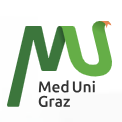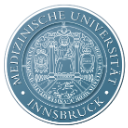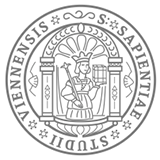Detailed introduction of the University of Linz:
Introduction
The University of Linz (full name: Johannes Kepler University Linz), located in Linz, the capital of Upper Austria, is a public comprehensive university in Austria and the largest scientific research institution in Upper Austria.
Overview
Student size: There are currently about 19,300 students, of which international students account for about 1/9.
Faculty: There are many excellent professors and researchers who have rich teaching and scientific research experience in their respective fields and provide students with high-quality education and guidance.
History
Founding time: The school was founded in 1492, rebuilt in 1966, and renamed Johann Kepler University of Linz on October 1, 1975 in memory of the famous astronomer Johann Kepler who taught and researched here.
School Strength
Teaching Resources: The school has complete facilities, including modern teaching buildings, libraries, banks, student restaurants, gymnasiums, recreation centers, student dormitories, etc. Its library has a rich collection of books and magnificent buildings, which provides convenience for students' study and life.
Academic Research: As the largest scientific research institution in Upper Austria, it has achieved remarkable research results in the fields of social sciences, economics, law, engineering and natural sciences, and enjoys a certain reputation internationally. The school also actively carries out international cooperation and exchanges, and has established cooperation with more than 120 universities in more than 40 countries around the world. Many universities have established cooperation agreements, and their international influence is constantly enhanced through cross-border exchanges of teachers and students, organizing international activities and cooperative research projects.
Institutional nature
The University of Linz is a public university.
Educational philosophy
Focus on cultivating students' innovative thinking and practical ability, emphasizing the cross-integration of disciplines, so that students can have interdisciplinary knowledge and vision to better adapt to the needs of diversified social development. At the same time, students are encouraged to actively participate in scientific research projects and social practice to improve their ability to solve practical problems.
Key laboratories and disciplines
Key disciplines: Computer science, mathematics, sociology, economics, law, chemistry, physics and other disciplines are strong. In the 2018 QS World University Rankings, the "Computer Science" discipline of the University of Linz ranked 201-250 in the world, and the "Mathematics" discipline ranked 251-300 in the world. Its Department of Sociology and Economics provides the most comprehensive social and economic research in Austria. The Department of Law has performed well in the fields of public law, private law and international commercial law. The various disciplines of the Department of Technical and Natural Sciences also have a high level of teaching and research.
Key Laboratory: The school is home to the Johann Radon Institute for Computational and Applied Mathematics (RICAM) of the Austrian Academy of Sciences, which provides important support for cutting-edge research in the field of mathematics.
Faculty
The school has three major departments, including the Department of Sociology and Economics, the Department of Technical and Natural Sciences, and the Department of Law. Each department has a number of undergraduate, master's and doctoral professional courses.
Ranking
2022 USNEWS World Ranking: 929
2022 THE World Ranking: 601
2022 QS World Ranking: 354
Expenses
Tuition: The reference tuition fee is 726 euros/school year, about RMB 5,695/school year.
Living expenses: about 6,000-10,000 euros per year, about RMB 47063-78438 yuan/school year.
Campus
Location and environment: The main campus is located in the northeast of Linz. It takes only 15 minutes by bus to reach the city center. The beautiful Danube River flows by the campus. The campus has beautiful scenery, pleasant climate, and beautiful surrounding natural environment, providing students with a good learning and living environment.
Architectural style: The campus has a variety of architectural styles. Modern teaching buildings complement ancient buildings, which not only reflects the historical heritage of the school, but also shows the vitality and innovative spirit of modern education.
-

Graz University of Technology
-

Medical University of Graz
-

University of Linz
-

Medical University of Vienna
-

Innsbruck Medical University
-

University of Vienna
-

University of Leoben
-

St. Pölten University of Applied Sciences
-

Vienna University of Technology
-

University of Graz
-

Mesoamerican University
-

Istmo University
-

Mariano Galvez University of Guatemala
-

Regional University of Guatemala
-

Galileo University
-

Francisco Marroquín University
-

Rafael Landívar University
-

University of the Valley of Guatemala
-

University of San Carlos of Guatemala
-

Technological Institute of Tlaxcala Plateau
-

Golfo University
-

Technological University of South Sonora
-

Technological University of Huejotzingo
-

Tizimín Institute of Technology
-

Chilpancingo Institute of Technology
